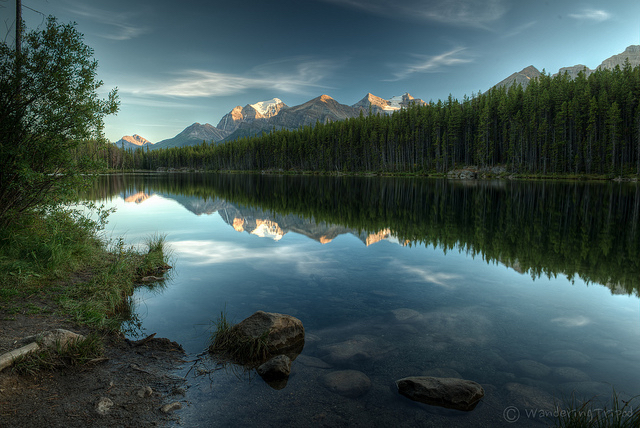There’s no question we had it bad with the former Harper government.
It slashed protections for 99 per cent of lakes and rivers that previously existed in the Navigable Waters Protection Act and removed safeguards under other water legislation.
People are hungry for real change. But one year later, are Justin Trudeau’s actions speaking louder than his words?
Trudeau’s ministers assure Canadians that they are modernizing water and environmental legislation like the Navigation Protection Act and will create nation-to-nation relationships with First Nations.
Meanwhile companies are still moving forward with pipeline, dam, mining and fish farm projects without scrutiny of their impacts on navigable waters. Many of these projects are also happening on the traditional territories of Indigenous peoples and will have impacts on their cultures, ways of life and economies. These projects are also happening without their free, prior and informed consent, despite Trudeau’s promise to respect this and other principles of the UN Declaration on the Rights of Indigenous Peoples.
The Trudeau government is giving these projects the green light. It issued a permit for the Site C dam under the Navigation Protection Act this summer, despite the Peace River being a “protected” river.
This mega-dam, which will destroy prime farmland capable of feeding one million people, could leave residents in British Columbia on the hook for its $9 billion price tag.
The federal government also approved the Pacific Northwest LNG project last month, despite objections to its impacts on salmon, Indigenous rights and the climate. This week hereditary chiefs for the Gitanyow and Gitwilgyoots and SkeenaWild Conservation Trust filed for judicial reviews of the federal government’s approval of the project.
Now all eyes are on Trudeau’s anticipated approval of the Trans Mountain pipeline in December. The government is unlikely to even look at the impacts on the 1,309 waterways it will cut through.
Pipelines like Trans Mountain and Energy East were exempted from federal scrutiny under the Navigation Protection Act. The Energy East pipeline crosses 2,963 waterways from Alberta to the coast of New Brunswick.
The Council of Canadians’ report titled Every Lake, Every River: Restoring the Navigable Waters Protection Act, released this past week, examines how projects like the Energy East pipeline, the Ajax Mine in B.C. and the Keeyask Dam and Bipole III transmission line in Manitoba threaten the ability of Indigenous communities, residents and the outdoors community to navigate waterways for fishing, transportation and recreation.
The Navigation Protection Act, formerly the Navigable Waters Protection Act, is one of Canada’s oldest pieces of legislation and protects the right of people in Canada to navigate lakes, rivers and other waterways. Healthy navigable waters are strongly linked to fisheries, boating, recreation, tourism and local economies.
The chair of the Standing Committee on Transport, Infrastructure and Communities recently stated that there was nothing stopping Transport Minister Marc Garneau from restoring protections for lakes and rivers.
Yet the only waterways that are “protected” are the same 97 lakes, 62 rivers and three oceans that Harper spared — this is out of an estimated 31,000 lakes and 2.25 million rivers in Canada and Indigenous communities.
In 2012, Mountain Equipment Co-op CEO David Labistour presented a list of 40 recreationally important waterways that are no longer protected and reminded the Senate committee studying the issue that the outdoor recreation industry creates at least six million jobs in Canada.
In contrast, according to Statistics Canada, there were only 250,000 jobs in mining, oil and gas, and logging combined in 2015, which makes up about only 1.6 per cent of the jobs in Canada. Most jobs are in non-extractive industries, including 12 per cent in retail trade, 12 per cent in health care and social assistance, 12 per cent in manufacturing, eight per cent in accommodation and food services and eight per cent in educational services.
It’s time to put the selfie sticks down. The Trudeau government is following in Harper’s footsteps and promoting the extractive industry as the driver of jobs. Canada needs to move past the myth that we can only have clean water or jobs, but not both. Protecting waterways means protecting sustainable, green jobs.
The Inuit in Labrador are taking a stand against the Muskrat Falls dam. In Ottawa, 99 youth were arrested for protesting the Trans Mountain pipeline. Until the Trudeau government restores protections for every lake and every river and begins transitioning away from fossil fuels, these land defenders are the ones who represent real change in Canada.
Emma Lui is the Water Campaigner and Maude Barlow is the National Chairperson of the Council of Canadians. This article was originally published in the National Observer.
Like this article? rabble is reader-supported journalism.




